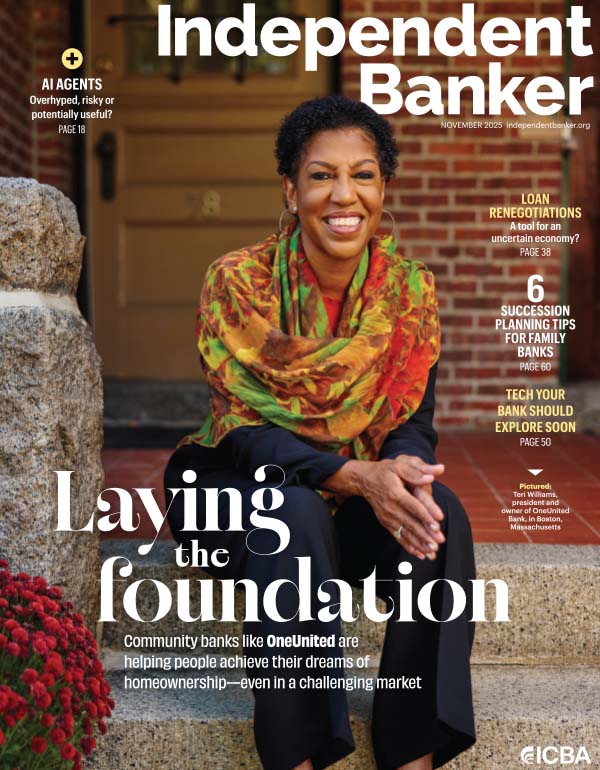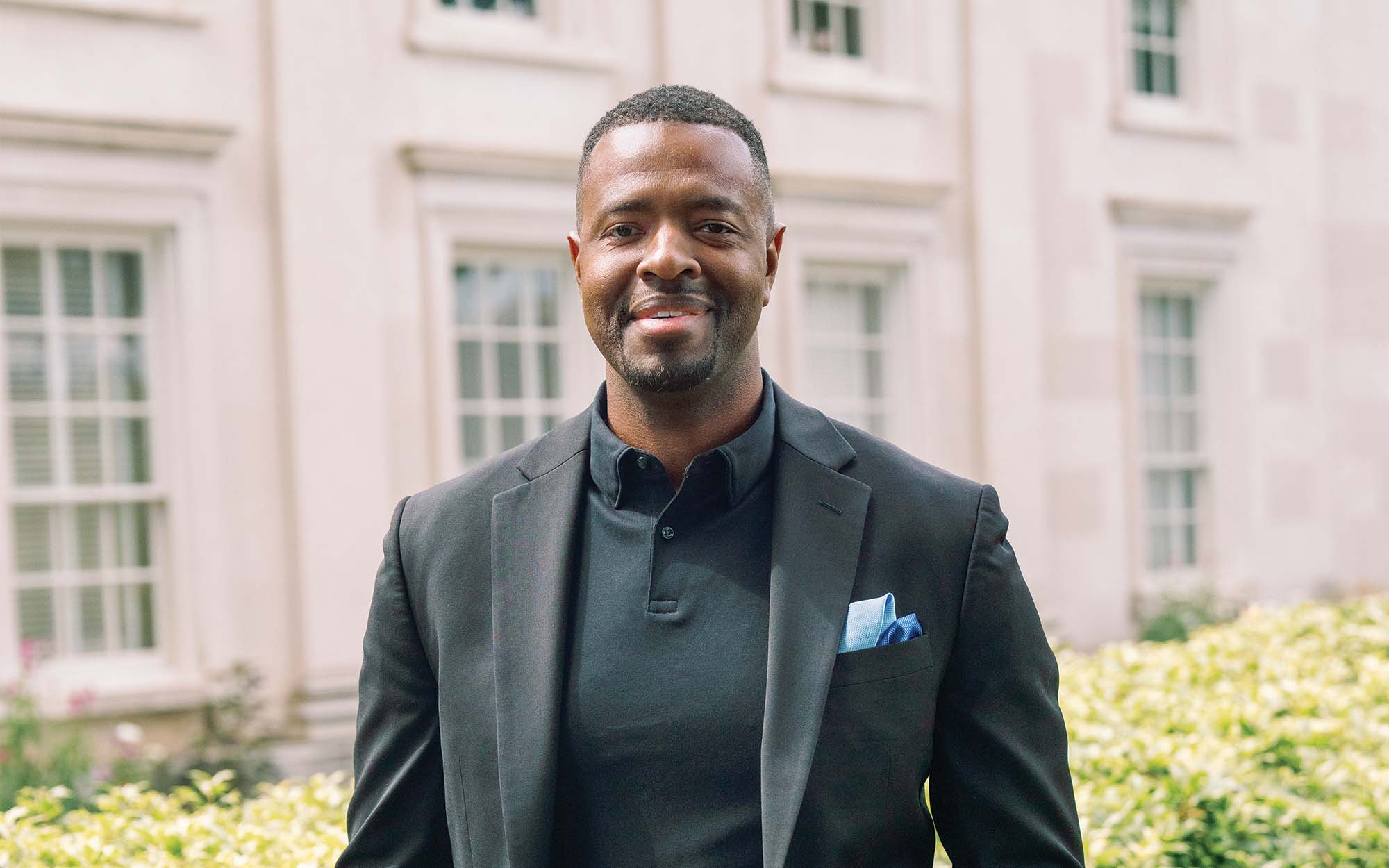Name:
Customers Bank
Assets:
$22 billion
Location:
Malvern, Pa.
Innovation is a core value at $22 billion-asset Customers Bank in Malvern, Pa. “Our DNA here at Customers is to say, ‘Let’s take on tomorrow,’” says chief information officer Nick Harris. “We try to stay out front to influence what we can and lead so that we are wowing our customers. We intentionally take on ways to drive innovation.”
Customers has developed an innovation framework that clusters around four “I’s”: inspiration, ideation, implementation and incrementation.
“For inspiration and creating ideas, people need to see what’s possible and what are others doing in this space and where does value exist,” Harris explains. That’s what drew the bank to tackle artificial intelligence (AI) head on.
Finding AI’s value
Customers Bank has embraced generative AI and the conversation surrounding it. Shortly after ChatGPT was first announced in late 2022, Customers’ C-suite executives began sharing articles among themselves via a private social media group. They educated themselves on the possibilities and pitfalls of AI. “We decided that there could be value in adopting AI,” Harris reports.
The executives created an “AI charter” that identified roles and responsibilities. “We meet once a month with a robust agenda and discuss compliance, risk, policy, procedure and use case evaluations,” Harris says.
Executives also created a roadmap for providing AI training to all Customers Bank employees. Since this “First Pass” training was introduced in Q1, 2024, 99% of the bank’s employees have received training in what AI is, how it is evolving, where it might be headed and the potential risks.
“We prompt employees to use AI to optimize their day and find efficiencies. How to use AI responsibly will be ubiquitous for knowledge workers in the future.”—Nick Harris, Customers Bank
Tapping into potential
The community bank used third-party training materials, such as LinkedIn Learning, which leadership tracked through an internal learning management system. However, they were not satisfied with a one-shot exposure to AI. Customers has followed up with additional modules and regular emails.
“We want to keep the momentum going and have employees begin to use the tool,” explains Harris. “For example, we provide tips such as how to engineer AI prompts.”
While the C-suite team developed the overall training roadmap, Customers has another level of managers and individual contributors leading the implementation: the AI Discovery team. This team is cross-functional and has 15-minute meetings with Harris twice a week to check in on their progress.
In response to employee feedback, the bank is also evolving a “champions” model for hands-on support. These champions receive more AI training and serve as go-to partners for specific functions to help their teams use AI on the job.
Putting AI to use
Quick Stat
$200B to $340B
Banks’ potential value increase while using generative AI
Source: McKinsey & Company Financial Services
Customers has worked through an “acceptable use” AI policy for the bank and has created an evaluation framework for potential AI uses. Criteria for evaluation include the value, the cost, the length of time to develop and the risk. “We take that aggregated score and prioritize the items that could leverage AI,” Harris says.
Harris reports that Customers is realizing two main benefits of AI to date: boosting productivity and enhancing cybersecurity.
He explains how AI can boost productivity. “We prompt employees to use AI to optimize their day and find efficiencies. How to use AI responsibly will be ubiquitous for knowledge workers in the future.”
AI’s capabilities in identifying threat patterns can greatly strengthen a bank’s security posture, according to Harris. “Bad actors are already using AI for more sophisticated ingresses and breaches,” he warns. “Sticking your head in the sand and hoping it won’t happen is not a strategy.”
Balancing innovation and compliance
While Customers actively encourages innovation, Harris notes that the bank also has a strong risk management culture. “We look at everything we do through a risk‑based lens,” he states. “AI is no different.”
Customers has not fully introduced AI into its transaction stream at this point and is not rushing to do so. “We have to ensure that our risk-based approach to any technology outlet aligns with banking regulatory and compliance frameworks,” Harris observes. “We could get there quicker, but we want to make sure it’s acceptable.”
Despite taking a cautious approach, Harris remains positive about the future of AI. “I think it’s bringing a whole new level of capabilities to the world,” he says. “‘Let’s take on tomorrow’ is not a platitude. We keep our eyes peeled for what is coming and how we can use it. I can’t wait for tomorrow to get here.”
Creating a culture of innovation
As part of its commitment to keep steadily advancing toward the future, Customers Bank ensures its goals for innovation are reasonable and effective.
President and CEO Sam Sidhu cautions banks not to adopt change goals that are too aggressive. “The temptation is to say, ‘Why can’t we do everything at once, quickly?’ Instead, roadmap the first 90-day goal. You can only work so quickly on some of these types of changes,” he explains.
To achieve such goals, Customers Bank holds quarterly off-site meetings. All of the top executives have a seat at the table as they propose and debate new ideas.
However, the final recommendation or decision is made by the person closest to the proposed action. Off-site meetings end with identifying specific action items and one leader commits to executing each action item. This ensures that innovative ideas don’t get left on the whiteboard.
Customers Bank prioritizes innovations that will make a positive impact on its customers. “We want to do things that can help the customer experience,” Sidhu concludes.






